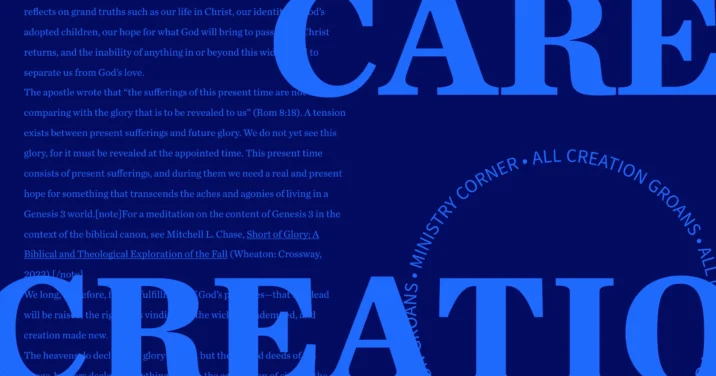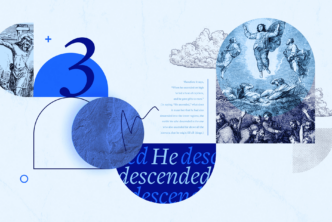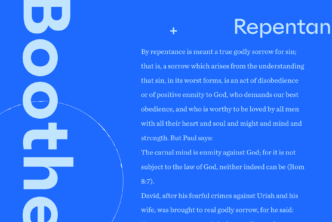Discovered in the sparse wetland environments of northeastern Australia, one remarkable species of frog swallows its own fertilized eggs, sending them to what seems to be their digestive doom. But by transforming this normally hostile environment into a hospitable one, female gastric brooding frogs are able to use their stomachs as an incubation chamber for their own developing young.1 Once swallowed, the gelatinous eggs produce an enzyme that neutralizes the tissue-melting acid surrounding them. For six weeks, the eggs, followed by newly hatched tadpoles, are protected from a violent world outside and stomach acid inside by the safety of their mother’s body and their own wonderful protective enzymes. From these incredible amphibians, a cure for our own painful peptic ulcers could be at hand. But sadly, these frogs are no longer with us. Officially described as a new species in 1973, the last specimen was observed in the wild a mere eight years later in 1981. In the blink of an eye, we lost a potentially life-saving medical advancement. We have also lost a beautiful part of God’s good creation, however small.
What killed the gastric brooding frog was our fault. Global trade in amphibians for research, food, and as pets allowed the spread of a devastating fungal skin infection to frogs, toads, and salamanders all around the world.2 For amphibians, who breathe through their skin, this disease is apocalyptic. In just the last fifty years, chytrid fungus has wiped out roughly 40 percent of all amphibian species, including the gastric brooding frog.3
Paul’s letter to the Romans describes the whole creation as “groaning together in the pains of childbirth” as the creation “waits with eager longing our revealing as sons and daughters of God” (Rom 8:19–22).4 Frogs don’t really emit groans, of course. Their chirps and squeaks and ribbits are more adorable than morose. But make no mistake, the amphibians are groaning. And their metaphorical groans join a deafening chorus of cries, whines, yelps, and death rattles rising up from abused pets in puppy-mills, from crowded cows and chickens in factory farms, from newborn dolphins caught in fishing nets, and from endangered bumblebees poisoned by insecticides.
Suffering
In Romans 8:18–25, Paul draws a parallel between the suffering of the Christians persecuted in Rome and the suffering of nature. Surprisingly, in both cases, the sufferings are anticipating the same future event: the revealing of the sons and daughters of God. Paul describes the creation as groaning in the “pains of childbirth,” a well-crafted metaphor of intense suffering culminating in unspeakable joy. For redeemed believers, it is easy to see how earthly tribulations can lead to the joy of ultimate glorification—but why would creation itself long for the day of our redemption? What good accrues to the earthworms and elephants when the church is called home? When I think of a moment that might capture a bit of the fulfillment of this “eager longing,” I imagine a loyal golden retriever awaiting the daily return of its family. In a good world, man’s dominion over his dog is beautiful. The return of the master means delicious food, pure fun, and contented fellowship. Life is as it ought to be. Creation awaits New Creation because its master (humanity) will finally return to our original missional calling, and we will rule as we ought. The end will be the culmination of what was meant in the beginning; the suffering we see now has not always been.
Genesis describes a good world given to Adam and Eve as royal priests, made imago Dei, who would name, subdue, and have dominion over the animals, who would tend and keep the garden, who would rule this world as functional representatives of God himself (Gen 1:26–28). Thoughtful theologians like G. K. Beale and Mitchell Kim have suggested that humanity’s original creation mandate included extending the peace and harmony of the temple-like garden of Eden to the rest of the world, until the whole earth was full of God’s glory.5 Tragically, the sin of Adam and Eve subjected this world to futility and placed it in bondage to corruption (Rom 8:20–21). Throughout history, God’s holy presence has shifted from edenic garden to desert tabernacle to Jerusalem temple, but God never abandoned his vision for what humans ought to be nor rescinded our original mandate to care for creation. In the days since Pentecost, our bodies have become temples of the Holy Spirit, and the presence of God now lives in every redeemed believer, equipping the church to fulfill God’s mission on earth. We have, rightly, embraced Jesus’ great evangelistic commission (Matt 28:16–20), but we have mostly forgotten that proper dominion of nature was always supposed to progress in partnership with the proclamation of peace.
We have, rightly, embraced Jesus’ great evangelistic commission (Matt 28:16–20), but we have mostly forgotten that proper dominion of nature was always supposed to progress in partnership with the proclamation of peace.
Three pillars
During Jesus’ earthly ministry, it was clear that he came primarily to save our souls, yet he also displayed enormous compassion for the physical ailments of the crowds and healed all who came to him (see, for example, Matt 14:14). He exhorted his followers to preach the kingdom of heaven but also to heal the sick, the lame, and the blind—and he exhorted them to give up possessions for the sake of the poor (Luke 9:1–2; 18:22). Evangelism and charity, therefore, must be two unchanging pillars of the church. Jesus also taught that God cares for the lilies of the field and the lowliest of the birds (Luke 12:27; Matt 10:29). Proverbs 12:10 says “Whoever is righteous has regard for the life of his beast.” And no description of heaven is complete without reference to bountiful nature: lambs and fruits, leopards and rivers (Isa 11:6; Rev 22:2). Given the essential importance of the creation mandate of Genesis 1 to the biblical story, I would, perhaps boldly, suggest that creation care ought to be a supportive third pillar upon which the church is built.6
Of course, it would be a terrible mistake to think these three pillars are in competition. Rather, I see conservation playing a vital supporting role for the other two. For what good is it to begin our gospel message with an appeal to the Creator of heaven and earth as Paul did in Athens (Acts 17:24) if we do nothing to prevent creation itself from becoming a mutilated and horrific disaster? What good is it to say to someone “Repent of your sins,” yet ignore their pain and physical needs (Jas 2:14–17)? Those who are most affected by environmental disasters and disease are already the most vulnerable among our communities. Caring for creation is caring for souls. Creation exists to proclaim the glory of God and provide evidence of God’s eternal power and divine nature (Ps 19:1; Rom 1:20). We have inherited from Adam and Eve a God-given responsibility for conservation just as surely as we have inherited from them the imago Dei.
Caring for creation is caring for souls.
Objections to creation care
Some may ask: If a New Creation is coming, why care for the old? Or some may think that the environmental problems facing us are too great, success is out of reach—so why bother with conservation? How terrible it would be if we were similarly apathetic and defeatist about evangelism or charity! It is not with the strength of our wills that we save our souls and leave our sin nature behind. Nor is it by our own might that others come to salvation. And no matter how much we may sacrifice, won’t the poor always be among us? The human futility of our efforts does nothing to diminish the virtue-forming works we have been given to do. Our ultimate hope for New Creation lies not in our own efforts but in the grace of God, just as it does with evangelism and charity (Eph 2:8). Therefore, our responsibility for these good things persists no matter how hopeless it may seem.
Admittedly, it is overwhelming to imagine a life devoted to evangelism, charity, and conservation. But thanks be to God, the church is not an individual but a body of believers, each with unique and important roles to play (1 Cor 12:12–31). Three important reminders about the body of Christ may help here.
- Some of us within the church are called to complete devotion to one of these callings—the kind of “sell what you possess and give to the poor” kind of devotion (Matt 19:21). Such people include missionaries, pastors, full-time outreach workers, and even some conservation biologists actively working to protect living things and their ecosystems for the sake of—and as a witness to—their faith.
- Not everyone is called to complete devotion to one of these callings. The church is also full of stay-at-home parents, graphic designers, accountants, and electricians. The body is necessarily diverse and that diversity is a strength (Eph 4:11–16).
- Everyone is called to active participation. My role as a zoology professor doesn’t mean I can refrain from sharing the gospel with those around me, nor does it exempt me from serving the needy in my community. Similarly, your role, whatever it is, doesn’t preclude you from evangelism, charity, and conservation in your daily life.
Practicalities
What might the church’s call to conservation look like? Ultimately, I think the vision for conservation is united with those for evangelism and charity: the kingdom of God on earth as it is in heaven. Heaven will be a place where people from every nation and language worship God together (Rev 7:9), where there is no more poverty and human suffering (Rev 21:4), and where ecosystems thrive, full of diversity and beauty, eliciting wonder, and free from their groaning and bondage to decay (Isa 11:6–9). A church that recognizes humanity’s calling to care for creation will find ways to enjoy, protect, and learn about nature as a community. Because nature exists as a persistent testimony to God’s existence, power, and majesty, we should find ways to witness this testimony and allow ourselves to be in awe. Perhaps a church could organize an evening trip far from light pollution, read some psalms, sit in silence, and contemplate the grandeur of God under the blanket of stars and planets. Perhaps a church could create times for the community to enjoy Scripture and prayer at sunrise or sunset, in a meadow or by a stream. God is present not only in our chapels and cathedrals but also in the world he made for us to inhabit.
As a church, tend and care for your local garden of Eden, perhaps in a community garden or by planting wildflowers in open spaces to increase pollinator diversity. Maybe volunteer at an animal shelter, or adopt a stream, park, or greenway and work diligently to keep it from being polluted by the world. More radically, consider funding or participating in local biodiversity surveys. Adam’s first task was to name the animals God brought to him. Names, from El-Shaddai to Adonai, Abraham to Israel, are significant things. Not all of God’s creatures have been known and honored with a name yet. How can we love, protect, and enjoy something we don’t even know exists? Or perhaps your church could participate in a citizen science project like those documenting bird migrations or the spread of invasive insect species. There’s even a project you could join that tracks the presence and abundance of that terrible chytrid fungus currently decimating our vulnerable frogs and salamanders.7
Paul told Titus to “let our people learn to devote themselves to good works” (Tit 3:14). Such good works would include the commands for creation care given to Adam and Eve all the way back in Genesis. By intentionally caring for creation as a church, we can also bring light, hope, and faith to the many unreached people in our community, people who are deeply and intuitively aware of God’s beckoning presence in nature (Rom 1:19–20), but whose hearts know not why. Creation is groaning, longing for the coming day when redeemed humanity finally fulfills our calling as servant–lords of all creation. Why wait?
Related articles
- What Does It Mean That All of Creation Groans?
- Every Person an Icon: Why Creation Signifies Dignity for All
- Little Lights: The Significance of Light in Genesis
- What Are the Christian Views on Creation?
- M. J. Tyler et al., “Inhibition of Gastric Acid Secretion in the Gastric Brooding Frog, Rheobatrachus silus,” Science 220.4597 (1983): 609–610.
- M. C. Fisher and T. W. Garner, “Chytrid Fungi and Global Amphibian Declines,” Nature Reviews Microbiology 18.6 (2020): 332–43.
- G. F. Ficetola, “Habitat Conservation Research for Amphibians: Methodological Improvements and Thematic Shifts,” Biodiversity and Conservation 24.6 (2015): 1293–310.
- All Scripture quotations come from the English Standard Version.
- G. K. Beale and Mitchell Kim, God Dwells Among Us: Expanding Eden to the Ends of the Earth (Downers Grove, IL: InterVarsity Press, 2014), 215.
- See Doug Moo and Jonathan Moo’s lectures on creation care.
- E. A. Group et al., “Citizen Scientists Monitor a Deadly Fungus Threatening Amphibian Communities in Northern Coastal California, USA,” Journal of Wildlife Diseases 52.3 (2016): 516–23.







